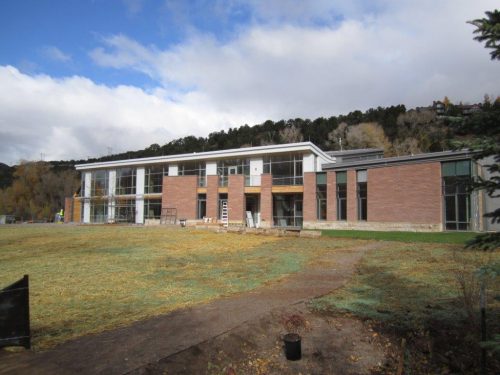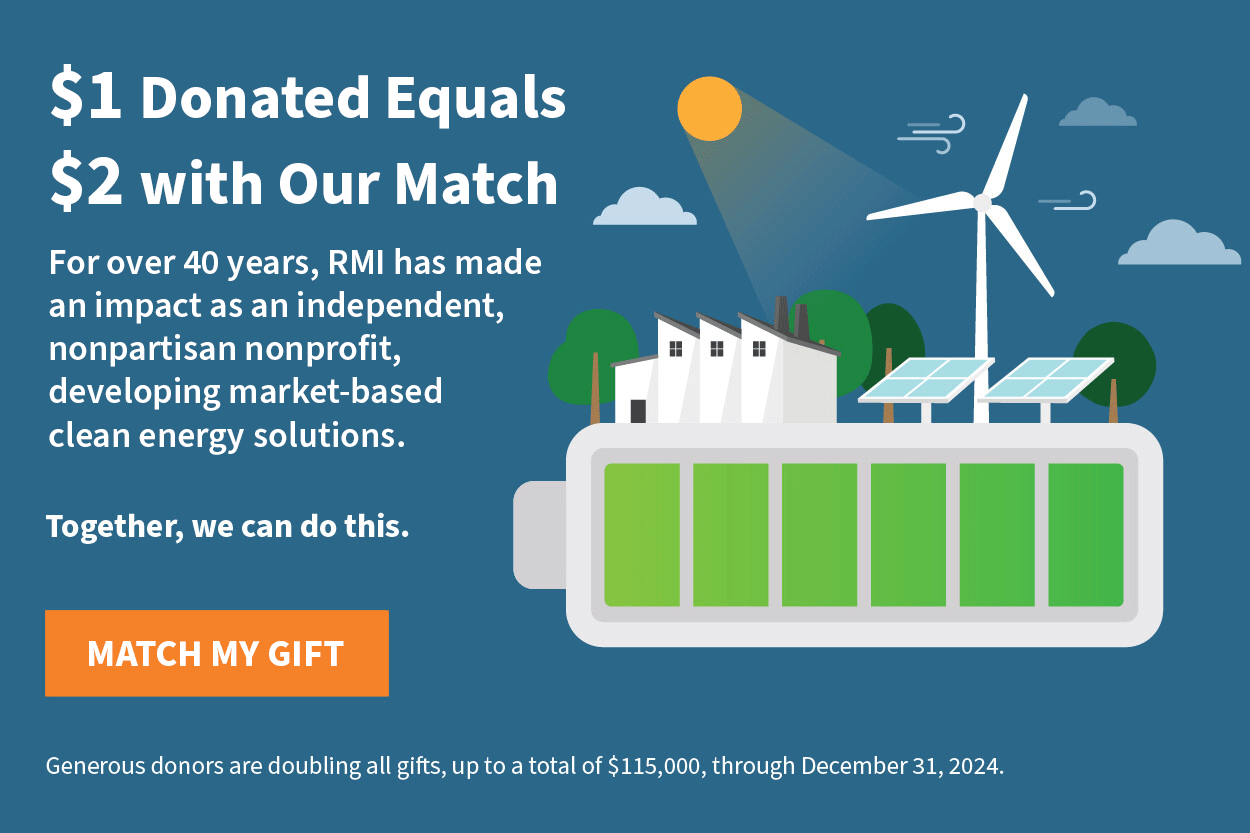
Innovating at RMI’s New Innovation Center
Using an Integrated Project Delivery
We are less than one month away from moving into our new building. December 14th will be our official first day of work in the RMI Innovation Center. Happy Holidays RMI! We are extremely busy putting the final touches on the interior finishes, the rooftop PV system, and the control system, and we’re continuing to engage with our staff about how to “sail” the new building. Our building is fundamentally different and much more dynamic than almost anywhere else we have worked.
This building is a big step for RMI because it allows us to demonstrate to the market the very type of building we hope to see become mainstream. Much like Amory Lovins’ Green Home has done for decades, it gives RMI a living laboratory, to adapt and grow over time as technologies and different ways of occupying and managing a building emerge. And it gives RMI a state-of-the-art convening venue to help collaborate with key energy stakeholders to achieve our mission.
Our new building is anticipated to use 17.2 kBtu/ft2, the lowest energy use in one of the coldest climate zones in the country. If all buildings in the U.S. were this efficient, we would save as much energy in one month as it takes to power all of New York City in a year.
OUR INTEGRATED PROJECT DELIVERY CONTRACTING PROCESS
On all construction projects, there are some difficult conversations that happen. Regardless of what the budget is, what the weather is doing, or what the contract structure is, there will be disagreements. In any successful process, these sticking points needs to be a discussion, with give and take on all fronts, not a mandate or stationary solution.
As a competitive athlete, I believe the most important driver to success is a strong team. You are only as good as your worst player. So why is the construction industry so controversial? Many projects run over budget, designs don’t meet expectations, or individuals underperform, due in large part to the lack of teamwork, trust, and communication. Integrative project delivery (IPD) brings to the table a strong collaborative approach and multidisciplinary process. More important than the specific clauses in the contract is the cultural mentality to which the participants approach conflict. And I can say from first-hand experience, it works.
Our contract states, “…this Agreement establishes a relationship of mutual trust and good faith among the Parties, who recognize that their individual success is directly tied to the performance of other Project Participants…” This sounds more like the team spirit cheer from band camp than page three of 38 in a multimillion-dollar building contract.
WHAT IS INTEGRATIVE PROJECT DELIVERY?
Integrative project delivery is an emerging contracting methodology that creates a framework for team relationships and decision making. Below is a diagram of how our multi-party agreement works. Boiled down, it creates a mechanism to incentivize the whole team to work together and identify cost savings, which will then be shared among all team members. Any budget overages after construction is finished will be funded out of the team profit pool (the ICL). Although there is some risk to team members, it creates a strong motivation to collaboratively bring the project at or under budget while providing an opportunity to generate more profit.
The IPD approach is centered around trust, collaboration, strong communication, creativity, and a shared risk and reward pool. Howard Ashcraft, a renowned attorney and key thought leader on IPD states: “[IPD] puts control in the hands of the project participants and makes them responsible for total project outcome, not just their individual performance. Correctly designed, it stimulates behaviors that increase creativity, improve productivity and reduce waste. A strong IPD Framework leads to better outcomes, whether measured in value, aesthetics, sustainability or otherwise.”
IPD is currently primarily used in the large-scale healthcare arena. It is gaining significant traction and interest more broadly across the building industry due to its ability to deliver results more cost effectively, faster, and under less adversarial conditions. Our architect anecdotally stated that over a quarter of new projects coming through their firm have some level of IPD, a huge increase from just a few years ago. There are several different contract forms for IPD including the Hanson Bridgett standard multiparty agreement (which RMI used), Consensus Docs 300, and AIA’s C195 Family.
OVERCOMING IPD CHALLENGES
We have worked through a fair number of challenges in IPD. The top 3 lessons learned include:
- Good communication: This is essential within the core team. Equally important and often overlooked is the communication with the construction trade partners. In general, the construction industry needs to come up with a better way to onboard contractors so they too fully engage in the collaborative nature of the project.
- Balancing innovation and repetitive optimization: The Innovation Center required inherently creative and unique solutions in order to achieve the project goals. This is to some extent contradictory to the very nature of IPD, which is to optimize and streamline a well-understood process in order to drive costs down. We are on track to achieve the project goals on budget, but this balance required careful attention and acknowledgement throughout the process.
- Carefully delineate what’s in and what’s out: When putting together the budget, we had to decide which sub-consultants and subcontractors should participate in the incentive compensation layer pool. The more that are included, the merrier. Similarly, carefully weigh which scope items are included or not. Since RMI is a non-profit and can’t take advantage of tax benefits, we procured our PV system using a power purchase agreement (PPA), which was funded outside our design and construction budget. While this was the right way to go from a financing perspective, we couldn’t directly trade costs between our design budget and our PV budget. Some efficiency measures add capital cost yet save energy and reduce the amount of PV needed. We weren’t able to take advantage of this debit/credit quite as directly.
IPD CONTINUES
I can say our IPD process has without a doubt resulted in a better project. Our team is working very closely still and we have a high degree of trust and respect for one another. IPD has given RMI cost control while delivering highly ambitious project goals laid out in our owner’s project requirements (OPR). We no doubt still have some tough conversations ahead and won’t know the final incentive payout to our team until the final costs come in, but all indications are looking good!
In order to continue the collaboration with our design and construction team into operation, RMI created a modest operational incentive pool. This pool is funded with avoided energy costs (the savings from lower than planned utility bills). It puts forth a simple incentive where if we exceed our energy use intensity (EUI) target (which was 19 kBtu/ft2), the team (architect, MEP, and contractor) will get a bonus. It is verified18 months after occupancy and encourages the team to continue working with RMI through commissioning and occupant engagement.
I wish to extend a heartfelt thank you from all of us at RMI to all the hundreds of people who have made this dream a reality! Our amazing design and construction team—you have exceeded our expectations! And to our incredibly supportive and generous donor partners…you are truly an inspiration. Thank you.

